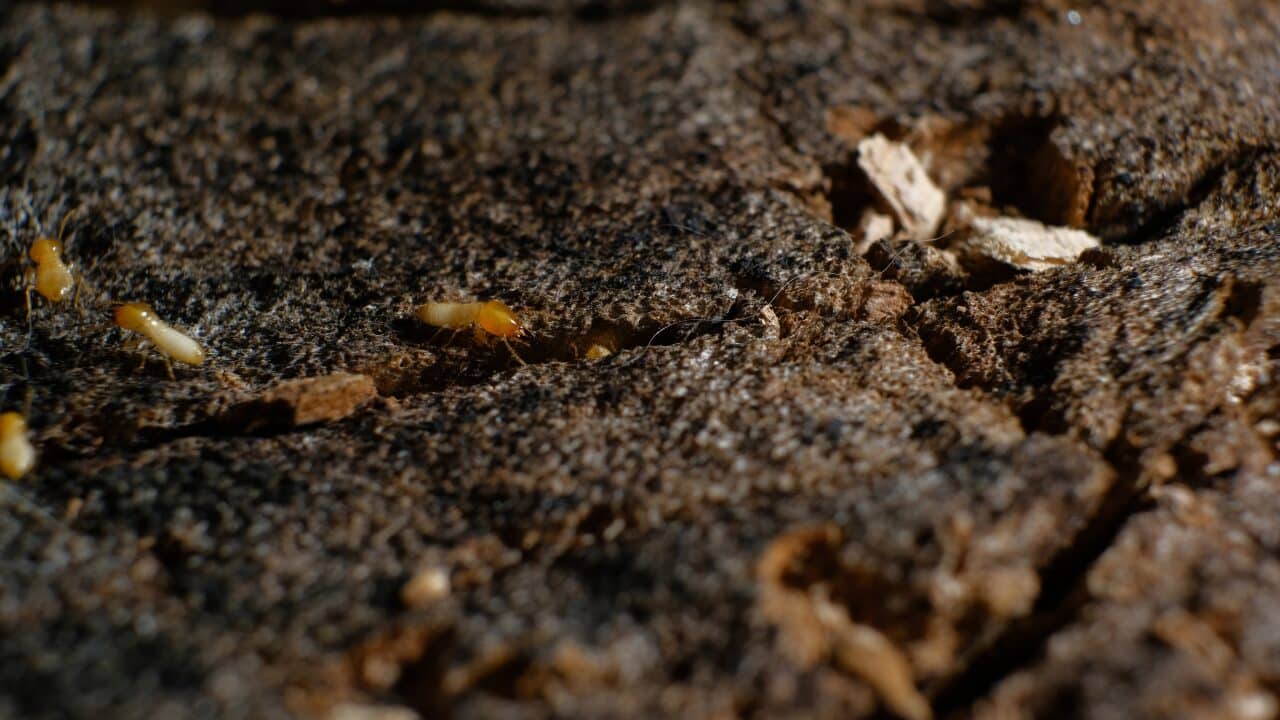Dry rot is a term that strikes fear into the hearts of homeowners and property managers alike. It’s a wood decay caused by certain species of fungi that digest parts of the wood. But what exactly triggers this destructive condition in wood, and how can it be prevented?
Table of Contents
The Fungus Among Us
At the heart of dry rot is a fungus that thrives in moist conditions. Contrary to its name, dry rot occurs in wood that has a moisture content of at least 20%. This moisture can come from leaking pipes, rain seeping through unsealed windows or doors, or even high humidity in the air. The fungus digests the parts of the wood that give it its strength, leaving behind a brittle, crumbly material that can no longer support weight.
One of the main factors that contribute to the development of dry rot is moisture. When wood is exposed to excessive moisture for a prolonged period, it creates the perfect environment for fungi to thrive.
This can happen due to leaks in the roof, plumbing issues, or poor ventilation in the affected area. The fungi spores are present in the air and can easily settle on damp wood, initiating the rotting process.
Another factor that can trigger dry rot is poor maintenance and neglect. If wooden structures are not properly cared for, such as regular inspections and timely repair, it increases the likelihood of dry rot.
Ignoring small signs of decay or damage can allow the fungi to spread and cause extensive damage to the wood. Search for Seattle dry rot repair if you need a professional’s assistance.
The Perfect Conditions
Four factors must be present for dry rot to take hold: wood for the fungus to feed on, oxygen for it to breathe, warmth for it to grow, and moisture. Remove one of these elements, and the fungus cannot survive. Unfortunately, these conditions are commonly found in buildings where wood is a prevalent construction material.
The catalyst for this process can stem from a variety of sources within a home. Leaks in the roof, whether from damaged shingles or poorly sealed flashing, can allow water to seep into the structure, gradually saturating the wood over time. Similarly, plumbing issues such as pipe leaks or improper drainage can introduce moisture into spaces where it shouldn’t be, leading to the onset of dry rot. Even something as seemingly innocuous as poor ventilation can exacerbate the problem, as stagnant air allows moisture to linger and permeate wooden surfaces.
One of the insidious aspects of dry rot is its ability to take hold unnoticed. Fungal spores, omnipresent in the environment, require only a damp surface to settle and begin their destructive work.
Once they find their way to damp wood, they germinate and start to consume the cellulose and lignin that form the structural basis of the wood. As the fungi proliferate, they generate mycelium, a network of thread-like structures that extend throughout the wood, breaking down its integrity and leading to the characteristic crumbly texture associated with dry rot.
Prevention and Treatment
Preventing dry rot involves controlling moisture levels in wood structures. This can be done by sealing wood with paint or varnish, fixing leaks promptly, and ensuring proper ventilation to reduce humidity. If dry rot is found, it’s crucial to remove the affected wood and treat the area to prevent recurrence.
To prevent dry rot, you must address moisture-related issues promptly. Simply replacing rotted wood without addressing the source of moisture is a temporary fix at best, as the conditions conducive to fungal growth will persist. Proper maintenance, including regular inspections for leaks and ensuring adequate ventilation, is crucial in preventing the onset of dry rot and preserving the integrity of wooden structures.
Regularly inspect your property for leaks, fix any plumbing problems, and ensure proper ventilation in areas prone to dampness. It’s also essential to keep the wood dry and well-maintained. This includes sealing any cracks or gaps in the wood, applying protective coatings, and treating the wood with fungicides or preservatives.
Additionally, practicing good housekeeping habits can go a long way in preventing dry rot. Keep the area around wooden structures clean and free from debris, as organic matter can attract fungi. Trim any overhanging branches or vegetation that may create shade and retain moisture, promoting fungal growth.
In conclusion, dry rot is caused by a combination of factors that include a wood-eating fungus and moisture. By understanding these causes, homeowners can take steps to prevent this silent destroyer from compromising the integrity of their wooden structures. Addressing moisture issues, practicing regular maintenance, and implementing preventive measures can help you protect your wooden structures from this destructive condition. Remember, early detection and timely action are key to preventing extensive damage and costly repairs.





